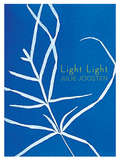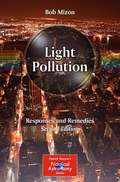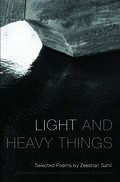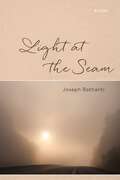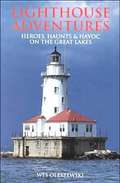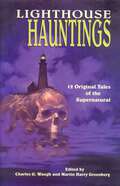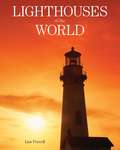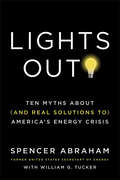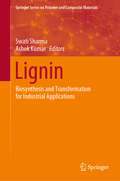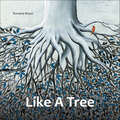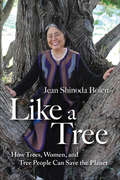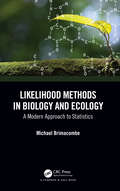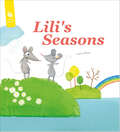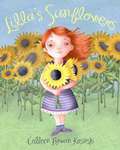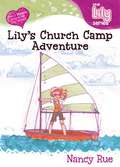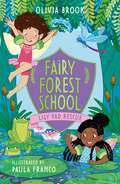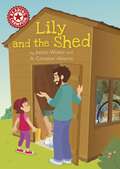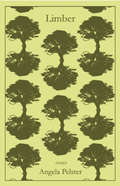- Table View
- List View
Light Light
by Julie JoostenSHORTLISTED FOR THE 2014 GOVERNOR GENERAL'S AWARD FOR POETRYShortlisted for the 2014 Gerald Lampert Memorial AwardFinalist for the 2014 Goldie Awards: Poetry CategoryMoving from the Enlightenment science of natural history to the contemporary science of global warming, Light Light is a provocative engagement with the technologies and languages that shape discourses of knowing. It bridges the histories of botany, empire, and mind to take up the claim of "objectivity" as the dissolution of a discrete self and thus explores the mind's movement toward and with the world. The poems in Light Light range from the epigrammatic to the experimental, from the narrative to the lyric, consistently exploring the way language captures the undulation of a mind’s working, how that rhythm becomes the embodiment of thought, and how that embodiment forms a politics engaged with the environment and its increasing alterations.
Light Pollution: Responses and Remedies (The Patrick Moore Practical Astronomy Series)
by Bob MizonThere have been many developments in the field of light pollution over the last few years, and this second edition of 'Light Pollution - Responses and Remedies' will introduce them in detail. Examples include the appearance of anti-light pollution legislation in various countries, new departures in lighting design, human health implications, and the growing realization among the general public that lighting is not always a good thing. In this title, author Bob Mizon discusses the various ways in which wasted artificial light has damaged the quality of modern life, and suggest solutions. This book is for anyone who has experienced glare, discomfort, or nuisance from poorly directed lights; has wondered why we waste so much money lighting the sky; or anyone who simply wants to see the stars instead of a baleful urban glow. "Light Pollution, 2nd Edition" offers practical and inexpensive solutions to the world-wide problem of wasted artificial light, and emphasizes that light pollution is not just an astronomers' problem, but affects everyone in various ways.
Light and Heavy Things
by Christopher Kennedy Faisal Siddiqui Zeeshan Sahil Mi DitmarLight and Heavy Things provides readers in this country an opportunity to discover the work of the late Pakistani poet, Zeeshan Sahil. Although readers of Urdu poetry mourned his passing in 2008, Sahil is a relatively unknown poet in the United States. Sahil's work conveys his post-modern sensibility with plain language, presenting political realities of Pakistan in personal terms.
Light and Heavy Things: Selected Poems of Zeeshan Sahil (Lannan Translations Selection Series)
by Zeeshan SahilLight and Heavy Things provides readers in this country an opportunity to discover the work of the late Pakistani poet, Zeeshan Sahil. Although readers of Urdu poetry mourned his passing in 2008, Sahil is a relatively unknown poet in the United States. Sahil's work conveys his post-modern sensibility with plain language, presenting political realities of Pakistan in personal terms.
Light at the Seam: Poems
by Joseph BathantiLight at the Seam, a new collection from North Carolina poet Joseph Bathanti, is an exploration of mountaintop removal in southern Appalachian coal country. The volume illuminates and champions often invisible people residing, in a precarious moment in time, on the glorious, yet besieged, Appalachian earth. Their call to defend it, as well as their faith that the land will exact its own reckoning, constitutes a sacred as well as existential quest. Rooted in social and restorative justice, Light at the Seam contemplates the earth as fundamentally sacramental, a crucible of awe and mystery, able to regenerate itself and its people even as it succumbs to them. More than mere cautionary tale, this is a volume of hope and wonder.
Light in the Night: Ancient and Modern Lighthouses
by Pamela GrahamFrom the book: A lighthouse is a tower by the sea with a brilliant light at the top to guide ships through dangerous waters. Lighthouses are usually built on rocky coastlines, isolated reefs, and at the entrances to harbors and estuaries. They have to be tall, so they can be seen during the day, and so that their light can shine for a long distance out to sea at night. As well as guiding ships along the coast to their destinations, they give warning of underwater rocks. Each lighthouse has a distinctive shape or an identifying color that allows mariners to know which lighthouse they are looking at; they can then be sure of their exact location. In some places where fog is common, lighthouses also emit warning sounds to alert boats and ships that they are near danger. This book explores lighthouses and their history. A fascinating book.
Light to Life: The miracle of photosynthesis and how it can save the planet
by Raffael Jovine"Read this book and you will learn how photosynthesis was discovered, how it works, and how we can produce more food to feed the world." - PAUL NURSE, Nobel Prize winner and author of What is Life?In Light to Life, biologist Raffael Jovine takes us on a journey of discovery into the intricate, beautiful and often surprising processes that convert energy from the sun into life and how all-important these are to our survival.Despite the unprecedented challenges the Earth faces from global warming, habitat loss, air pollution and population growth; Jovine shows us that there is hope to be found. Photosynthesis is the very source of life: it has the power not just to produce food, but to reshape continents, drive biogeochemical cycles, stabilise the climate and regulate weather.In this exciting, revelatory book, Jovine unveils a blueprint for the future: greening the desert, bringing the ocean on land, planting mangrove forests and oyster banks, growing algae for animal feed, human food and soil carbon... He demonstrates how by harnessing photosynthesis we can regenerate the planet and revise the way we human beings interact with it.This book will help you to see the world in a different way, in all its wonderful detail - through the photosynthetic pigments in your eyes.
Lighthouse Adventures: Heroes, Haunts and Havoc on the Great Lakes
by Wes OleszewskiWithin these pages will be found short stories, long stories, technical descriptions, shipwrecks, acts of courage, fascinating drawings, details on how things worked, maps of where things are and were, photos, and generally something for everyone. There will be quick reading for the days that you desire just a taste of lighthouses, and long, detailed adventures for the times when you want to be transported to another place and era. You will read the fascinating details on how some of these lighthouses were constructed in projects that are still considered as feats of ingenuity. Technical and cutaway drawings from the United States Lighthouse Board will be found within these pages, reproduced from the original reports of more than a century ago. Along this path of discovery you will become acquainted with people and places that were our neighbors and neighborhoods long forgotten. In short, this text contains a wide range of lighthouse adventures from construction to shipwrecks to ghosts and hauntings. As with all of my writings of the Great Lakes, each one of these stories is completely factual and the result of detailed research. There is absolutely no fiction here; the adventures that you will be reading actually happened, the people named actually existed and their trials and tribulations really took place.
Lighthouse Hauntings
What is it about lighthouses that stirs the heart and sparks the imagination? Built for strength and permanence, they are nonetheless always vulnerable. We look to them for guidance and reassurance yet never quite lose the feeling of being watched when near them. Their keepers work tirelessly to serve humanity, protecting many hundreds of lives each year; yet they themselves are isolated from other people. And of course, we are ever aware that these often remote outposts can be unforgiving of human frailties, so inevitably they become the setting for tragedy—and consequently—for spirits that linger at the site of their ruined hopes, their sufferings, and their obsessions.In Lighthouse Hauntings a dozen contemporary authors spin an intriguing mix of supernatural tales around this evocative theme. Some of these never before published stories are just plain creepy, others are mystifying or metaphysical; even heartwarming, but all are vividly memorable.
Lighthouse Tales
by Frederick StonehouseFrom the Book Jacket: Lighthouse Tales tells the story of the exciting human side of lightkeeping. It describes the deadly storms, killing fogs and numbing loneliness those who "kept the lights" endured. Stories of wreck and rescue, death and sacrifice, all thread their way through the pages of this remarkable tribute to the "wickies" of a bygone era. The book speaks of the courage of the old time keepers and their families, not just in rescuing shipwreck victims but also in the tenacity of their daily lives. Lighthouse Tales will appeal greatly to anyone interested in the wonders of the Great Lakes, historians, sailors, lighthouse fanatics and people just looking for a roaring good story. The book is thoroughly illustrated with rare photographs. Narratives include: The thrilling story of the steamer GEORGE W. PERKINS and it's close encounter with Lansing Shoal Light during the height of the infamous 1940 Armistice Day storm. Superior Shoal and the lighthouse that wasn't. The death of six brave Coast Guardsmen at Oswego, New York in 1942. Poverty Island Light and the mysterious treasure. And many more thrilling tales of "keeping the lights!"
Lighthouses of the World: 130 World Wonders Pictured Inside
by Lisa PurcellReaders say it best: "fascinating book" with "beautiful photos" and "information regarding all kinds of light houses"From ancient times until the present, lighthouses have symbolized safety, homecoming, and the seafaring way of life. Lighthouses of the World provides gorgeous full-color photos showcasing lighthouses from around the world. From the Barnegat Lighthouse on Long Beach Island, to the ancient Kõpu Lighthouse in Estonia (first constructed in 1531), Lighthouses of the World traverses continents in order to provide stunning color photography and illustration showing the many different lighthouses that man has constructed over the centuries.
Lightning Bug Light Show (The Adventures of Sophie Mouse #21)
by Poppy GreenSophie goes to a light show and helps a lightning bug performer in this twenty-first sweet book in The Adventures of Sophie Mouse!The traveling Lightning Bug Troupe is visiting Silverlake Forest, and Sophie can&’t wait to attend their light show for the first time. She even befriends a lightning bug named Rory. But Rory has a problem that&’s stopping him from performing with his troupe. Can Sophie help him take the stage? With easy-to-read language and illustrations on almost every page, the Sophie Mouse chapter books are perfect for beginning readers!
Lights Out: Ten Myths About (and Real Solutions to) America's Energy Crisis
by Spencer Abraham William G. TuckerIn this timely book, former Secretary of Energy Spencer Abraham debunks the myths that warp our current debate over energy, and offers new solutions to the real problems we face in America. Drawing on the very latest thinking from experts in industry and academia, and his own experiences running America's Energy Department, he proposes a fresh approach to meeting our daunting energy threats. This book effectively answers how America and the world can overcome the challenges of rising global energy demand, geopolitical disruptions of the energy marketplace, and the environmental impact of producing and using energy. What emerges is a pragmatic energy strategy that calls for blending a variety of energy sources including nuclear, clean coal, solar, wind, and natural gas with a more determined effort at improving energy efficiency through the deployment of smart energy grids and buildings, to help meet our challenges while preserving our economy and environment. Coming in the midst of a national debate about global warming, energy dependence and rising energy prices and rich with anecdotes from the author's service in the Senate and cabinet, this book is a clarion call that will help shape our energy future.
Lights at Night
by Tasha HildermanIn this bedtime picture book, join two special families on an illuminating journey through the year and seasons as they explore all the different lights we see at night.It is dark . . . until street lamps turn on, one, two, three. Red light, green light, yellow light — then, suddenly, lightning strikes! Our porch light guides us home, and while we sleep, the stars of the spring sky emerge, along with new babies, their faces lit by the night. In summer, our faces shine in the campfire light while fireworks burst above us. In autumn, we shiver and cheer under the towering lights of the football field and trick-or-treat on paths lit by the flickering smiles of pumpkins. And in winter, candles and holiday lights gleam but are dwarfed by the majesty of the aurora.This sweet, beautifully illustrated picture book, a perfect pick for introducing the seasons and seasonal activities and events, explores the simple joys we experience throughout the year when we share them with those we love.
Lignin: Biosynthesis and Transformation for Industrial Applications (Springer Series on Polymer and Composite Materials)
by Ashok Kumar Swati SharmaThis book presents a comprehensive overview on origin, structure, properties, modification strategies and applications of the biopolymer lignin. It is organized into four themed parts. The first part focuses on the analysis and characterization of the second most abundant biopolymer. The following part is devoted to the biological aspects of lignin such as biosynthesis and degradation. In the third part, chemical modification strategies and the preparation of composites as well as nano- and microparticles are discussed.The final part addresses the industrial application of lignin and its derivatives, as well as lignin materials. The usage for synthesis of biofuels, fine chemicals and in agriculture and food industry is covered.This book is a comprehensive source for researchers, scientists and engineers working in the field of biopolymers as well as renewable materials and sources.
Like a Tree
by Rossana BossùAn engaging internationally award-winning title that captures the beauty of life and symmetries in nature in a mixture of poetry and science for young readers. Poetic language and science come together for a truly remarkable look at what makes us all alive. Beautiful illustrations feature simple verbs, leading into lyrical text that shows the life cycles of various living things in nature, comparing the actions of human life to a tree. From the trees to the birds to a single tiny snowflake, we all live together, dance together, and breathe together to create a symphony of life. Clear facts and vivid imagery give the reader enough to use their imagination to look at nature and look at themselves with wonder and to discover how everything is connected.
Like a Tree: How Trees, Women, and Tree People Can Save the Planet
by Jean Shinoda BolenThe internationally known author and speaker provides an insightful look into the fusion of ecological issues and global gender politics.This book on the importance of trees grew out of Bolen’s experience mourning the loss of a Monterey pine that was cut down in her neighborhood. That, combined with her practice of walking among tall trees, led to her deep connection with trees and an understanding of their many complexities. She expertly explores the dynamics of ecological activism, spiritual activism, and sacred feminism. And, she invites us to join the movement to save trees.While there is still much work to be done to address environmental problems, there are many stories of individuals and organizations rising up to make a change and help save our planet. The words and stories that Bolen weaves throughout this book are both inspirational and down-to-earth, calling us to realize what is happening to not only our trees, but our people.In Like a Tree learn more about: The dynamic nature of trees — from their anatomy to their role as an archetypal symbol Pressing social issues such as deforestation, global warming, and overpopulation What it means to be a “tree person”“You will never again see [a tree] without knowing it has a novel inside, it’s supporting your life, and it’s more spiritual than any church, temple or mosque. Like a Tree is the rare book that not only informs, but offers a larger consciousness of life itself.” —Gloria Steinem
Likelihood Methods in Biology and Ecology: A Modern Approach to Statistics
by Michael BrimacombeThis book emphasizes the importance of the likelihood function in statistical theory and applications and discusses it in the context of biology and ecology. Bayesian and frequentist methods both use the likelihood function and provide differing but related insights. This is examined here both through review of basic methodology and also the integr
Lili's Seasons (On the Fingertips #2)
by Lucie AlbonLili Mouse discovers the seasons in this second book of the On the Fingertips seriesDelightful fingerprint illustrations help build vocabulary and highlight animals and objects from each seasonA bonus four-page finger paint workshop encourages cognitive development, improves fine motor skills, and stimulates imagination and creativity
Lilla's Sunflowers
by Colleen Rowan KosinskiLilla and Papa enjoy spending magical times in Lilla’s sunflower patch. Before Papa leaves for a trip that will take him far away from home for a long time, Lilla gives him a sunflower seed. "To remember me, Papa,” Lilla whispers.Seasons pass and Lilla’s mood falls like autumn leaves. Finally, news comes that her papa is coming home! The following summer, to her surprise, she receives letters from families with photos of their loved ones pictured with sunflowers. She learns that her gift to her father brightened the dark days for many people, and that her one small seed continued spreading sunshine across the country.Colleen Rowan Kosinki’s lyrical style and whimsical artwork brings this story of love to life. Not only will Lilla’s Sunflowers resonate with military families but with any child missing a loved one. This is a wonderful gift for holidays celebrating our country’s military heroes as well a quiet story for bedtime read-alouds.For kids aged 3 to 6, this is a must-have for military families or for families where one of parent does a lot of traveling and is away from the home for extended periods of time. It also serves as a charming story about sharing what you have and the benefits that can reap. Sky Pony Press, with our Good Books, Racehorse and Arcade imprints, is proud to publish a broad range of books for young readers-picture books for small children, chapter books, books for middle grade readers, and novels for young adults. Our list includes bestsellers for children who love to play Minecraft; stories told with LEGO bricks; books that teach lessons about tolerance, patience, and the environment, and much more. While not every title we publish becomes a New York Times bestseller or a national bestseller, we are committed to books on subjects that are sometimes overlooked and to authors whose work might not otherwise find a home.
Lilly's Church Camp Adventure
by Nancy RueLily's totally jazzed! She and the Girlz are going to camp, but the best part is they're going to be in the same cabin. It's going to be the funnest two weeks ever! Until they arrive at Camp Galilee. Excitement and girlish chatter quickly turn to distress and tears, when Lily discovers that none of the Girlz are in her cabin. Now Lily's alone and homesick, but in true Lily fashion, she discovers her true calling-sailing! But things go from bad to worse when Zooey manages to contract the worst case of poison ivy on the planet and Suzy vows she'll never speak to Lily agin. Things can only get better, right? After some interesting twists and turns, Lily learns a real lesson about the essential habits of the heart.
Lily Pad Rescue: Book 4 (Fairy Forest School #4)
by Olivia BrookA magical fairy school series about helping animals and looking after nature, from the publisher of the best-selling series, Rainbow Magic!Poppy Merrymoss is competing in the Lily Pad Lake swimming gala with her best friends Rose Seedpip and Ninad Cleardrop. But nasty Lady Nightshade is determined to ruin the event and fills the lake with a thick algae that covers the swimmers in slimy green gunk. And even worse, the thick algae has trapped a frog family beneath the slime!Can Poppy and her friends clean the lake in time to save the frogs - and the gala?Have you read Poppy Merrymoss's previous adventures, Fairy Forest School: The Raindrop Spell, Fairy Forest School: Baby Bunny Magic and Fairy Forest School: The Snowflake Charm?
Lily and the Shed: Independent Reading Red 2 (Reading Champion #516)
by Jackie WalterThis story is part of Reading Champion, a series carefully linked to book bands to encourage independent reading skills, developed with Dr Sue Bodman and Glen Franklin of UCL Institute of Education (IOE)Lily and the Shed shows a girl determined to make the perfect den in an old shed - and with some hard work, she gets it just right!Reading Champion offers independent reading books for children to practise and reinforce their developing reading skills.Fantastic, original stories are accompanied by engaging artwork and a reading activity. Each book has been carefully graded so that it can be matched to a child's reading ability, encouraging reading for pleasure. Perfect for 4-5 year olds or those reading book band red 2.
Lily's Mountain
by Hannah ModerowLily refuses to believe what everyone else accepts to be true: that her father has died while climbing Denali, the highest mountain in North America. Lily has grown up hiking in the Alaskan wilderness with her dad. He's an expert climber. There's no way he would let something like this happen. So instead of grieving, Lily decides to rescue him. Her plan takes her to Denali and on a journey that tests her physically and emotionally. In this powerful debut, Hannah Moderow has written an authentic Alaskan adventure that crosses terrain both beautiful and haunting—and ultimately shows the bond of family and the wonder of wild places.
Limber: Essays
by Angela Pelster"What a strange and unexpected treasure chest this is, filled with all manner of quirky revelations, all about the mundane sublime and the ineffable extraordinary. Most extraordinary of all, perhaps, through, is the haunting perfection, sentence by sentence, paragraph by paragraph, of the writing itself. Who is this Angela Pelster and where has she been all our lives?"-Lawrence WeschlerAngela Pelster's startling essay collection charts the world's history through its trees: through roots in the ground, rings across wood, and inevitable decay. These sharp and tender essays move from her childhood in rural Canada surrounded by skinny poplar trees in her backyard to a desert in Niger, where the "Loneliest Tree in the World" once grew. A squirrel's decomposing body below a towering maple prompts a discussion of the science of rot, as well as a metaphor for the ways in which nature programs us to consume ourselves. Beautiful, deeply thoughtful, and wholly original, Limber valiantly asks what it means to sustain life on this planet we've inherited.Angela Pelster's essays have appeared in Granta, the Gettysburg Review, Seneca Review, the Globe and Mail, Relief Magazine, and others. Her children's novel The Curious Adventures of India Sophia won the Golden Eagle Children's Choice award in 2006. She has an MFA from the University of Iowa's nonfiction writing program and lives with her family in Baltimore, Maryland, where she teaches at Towson University.
